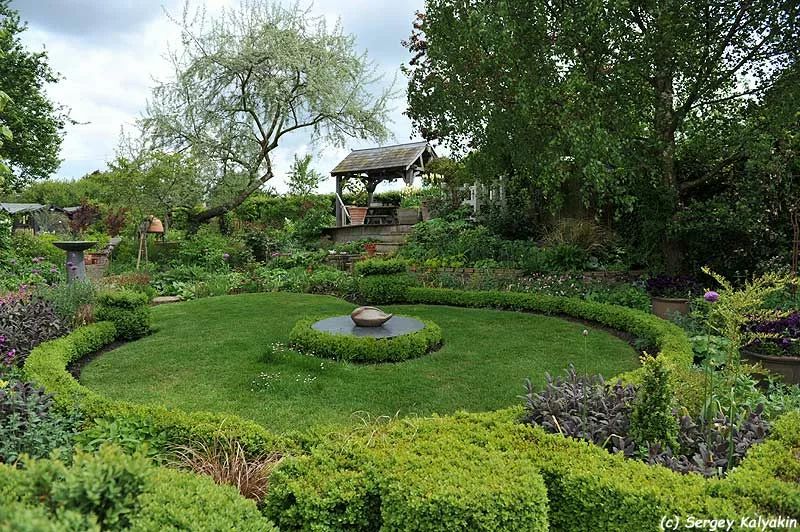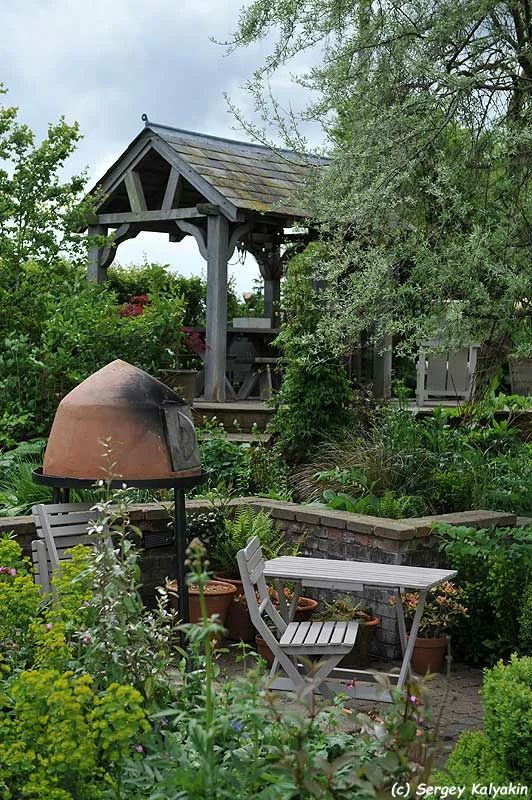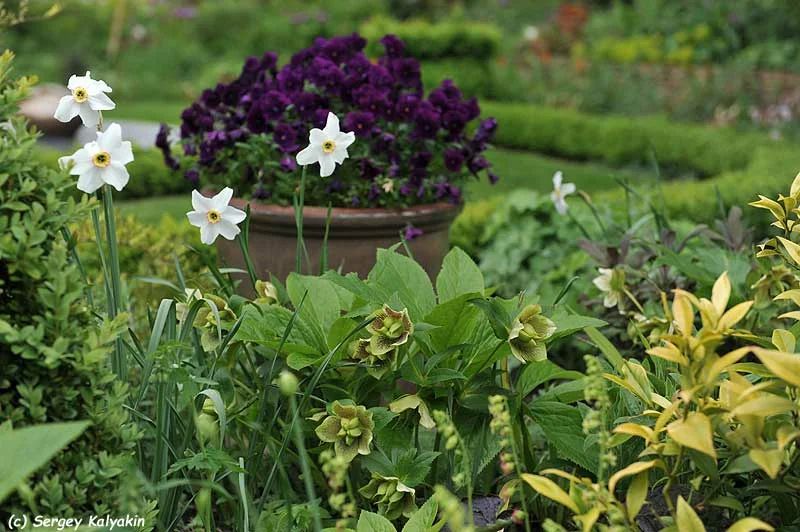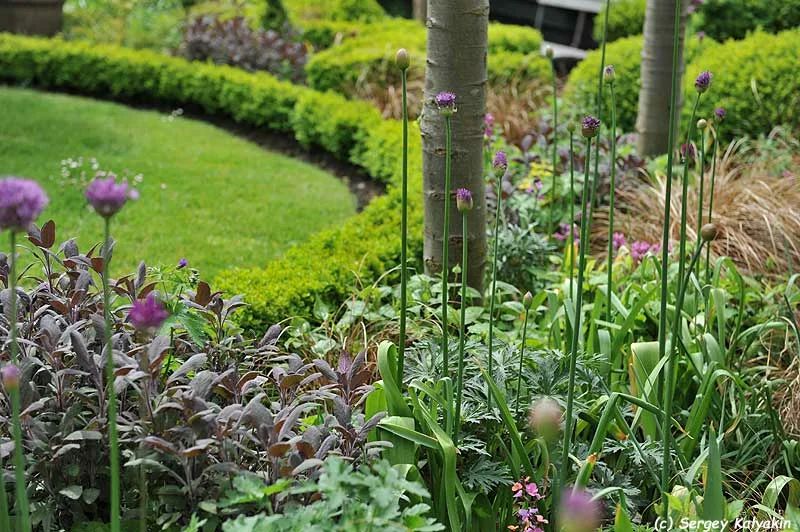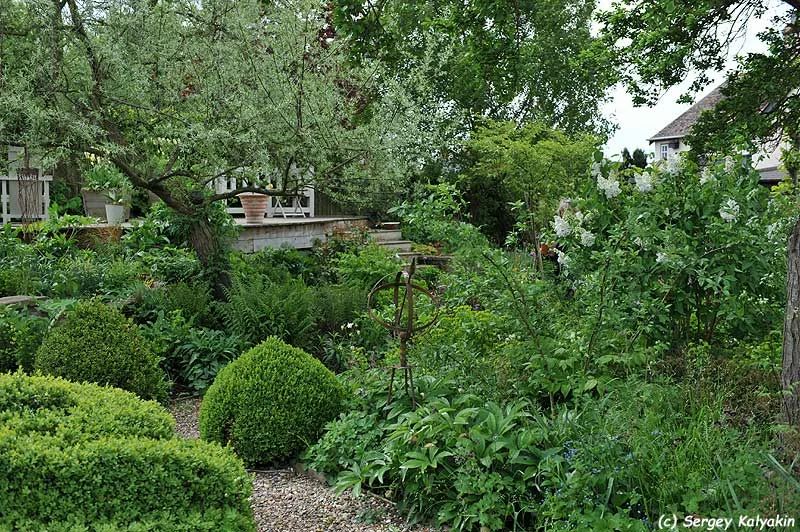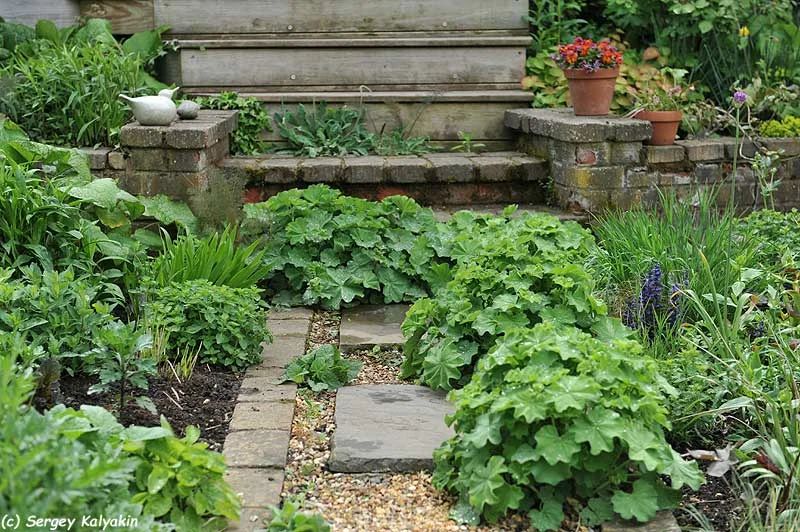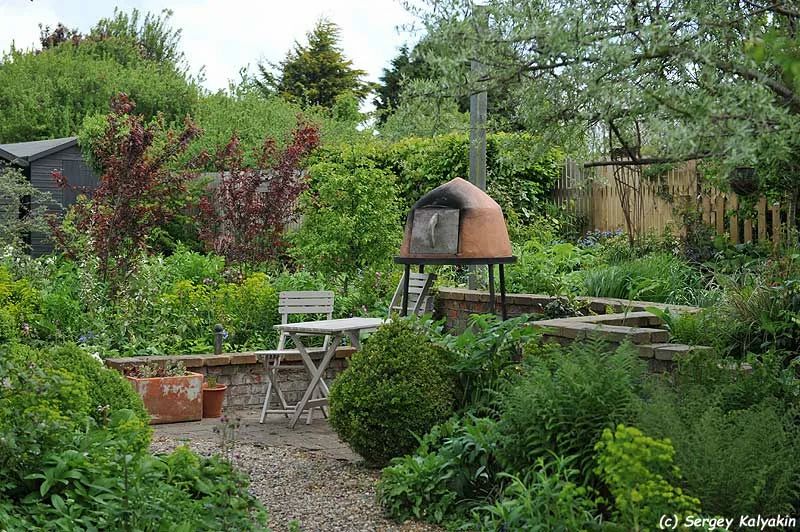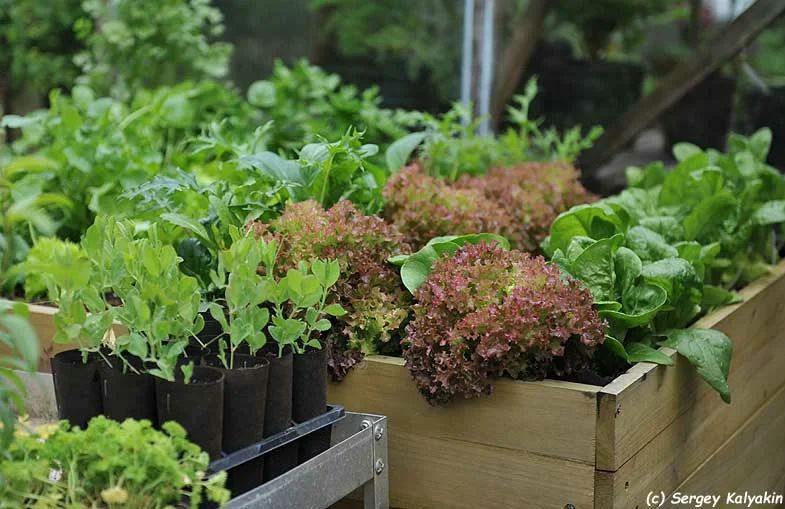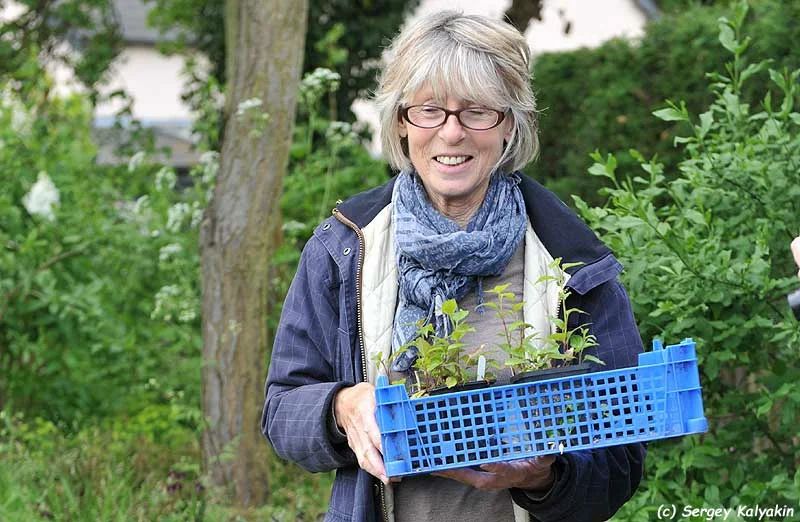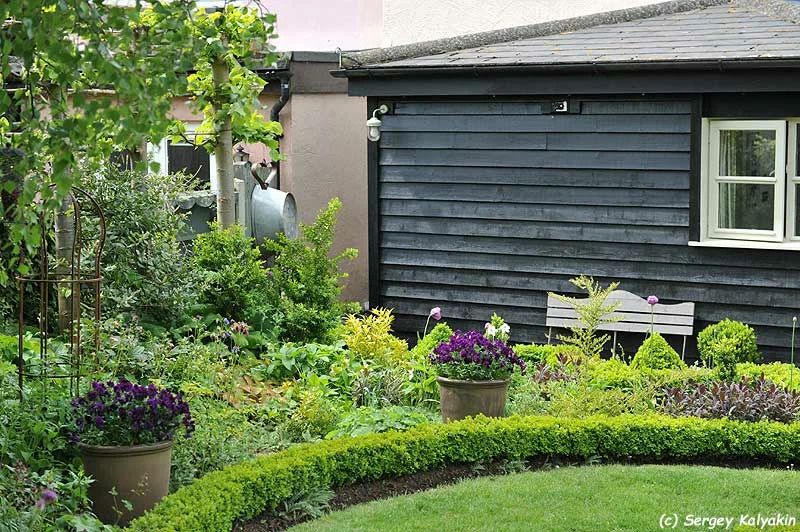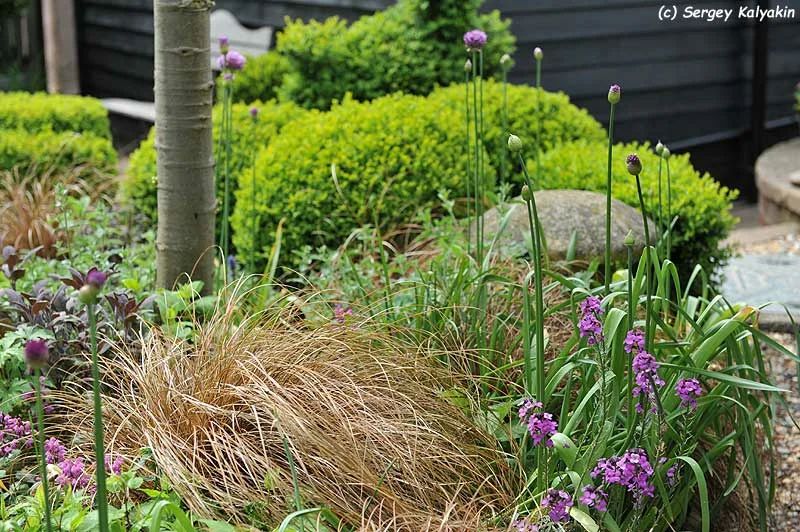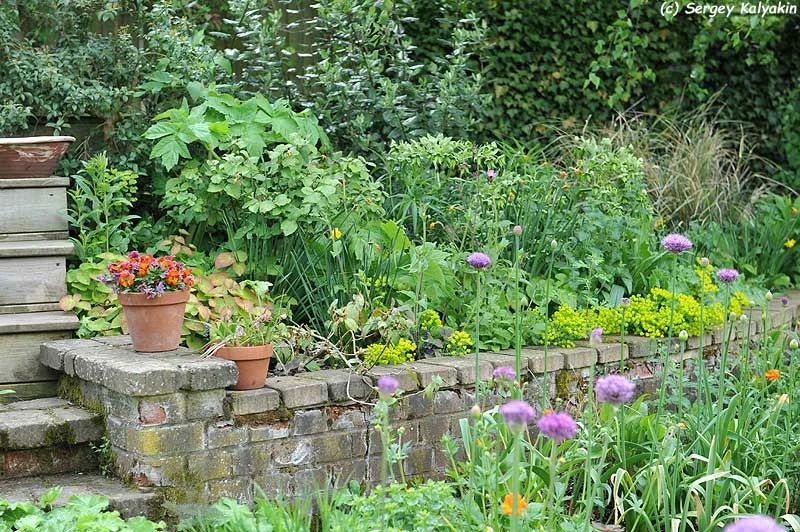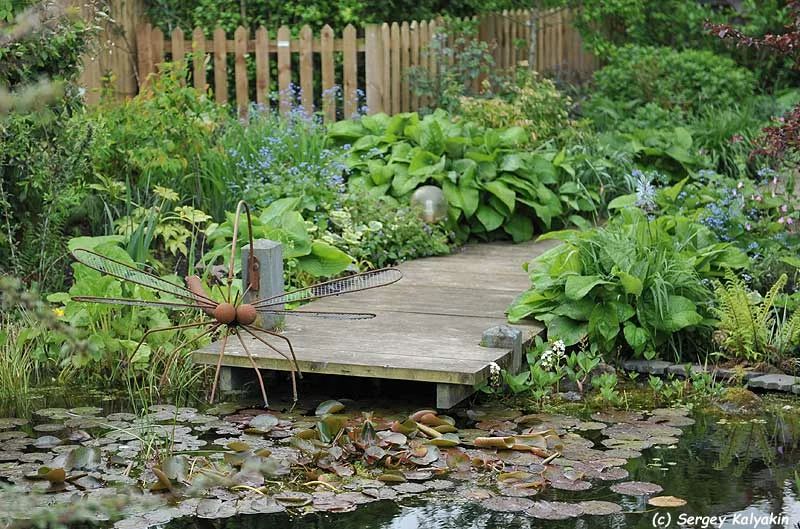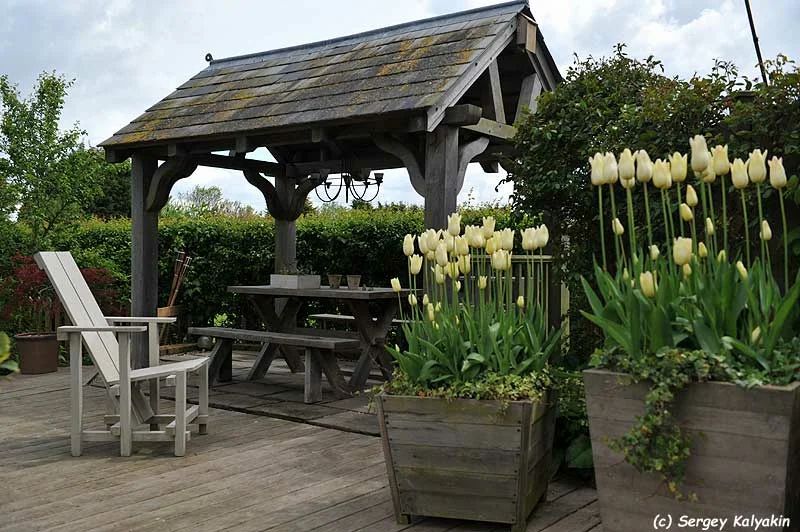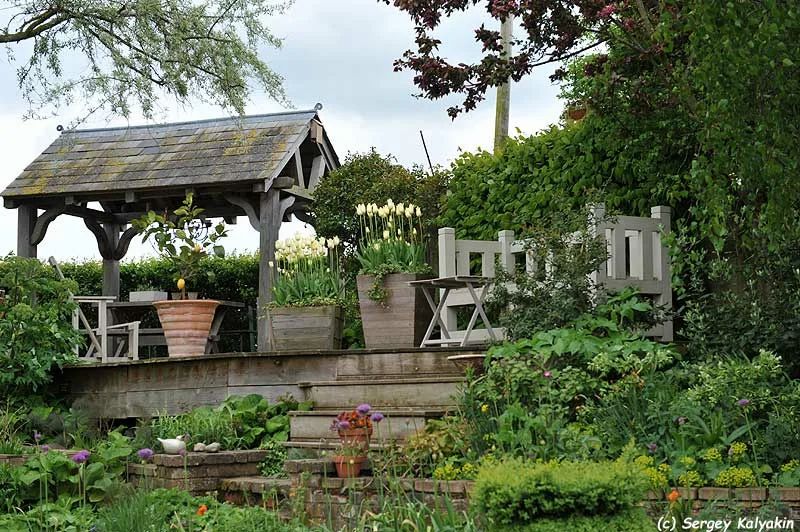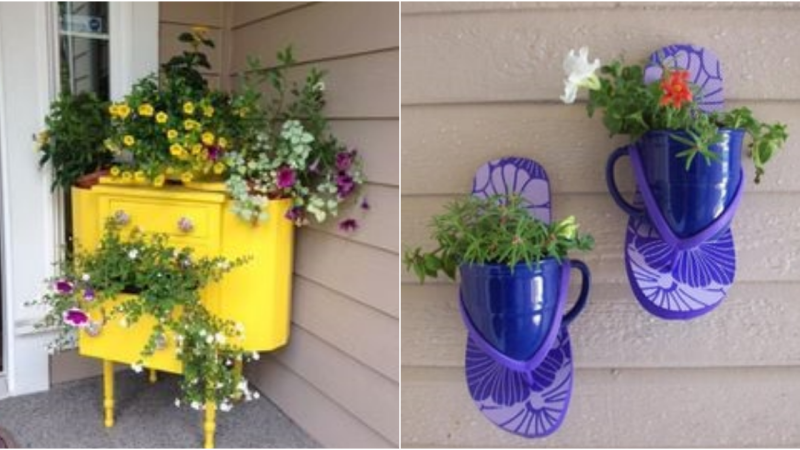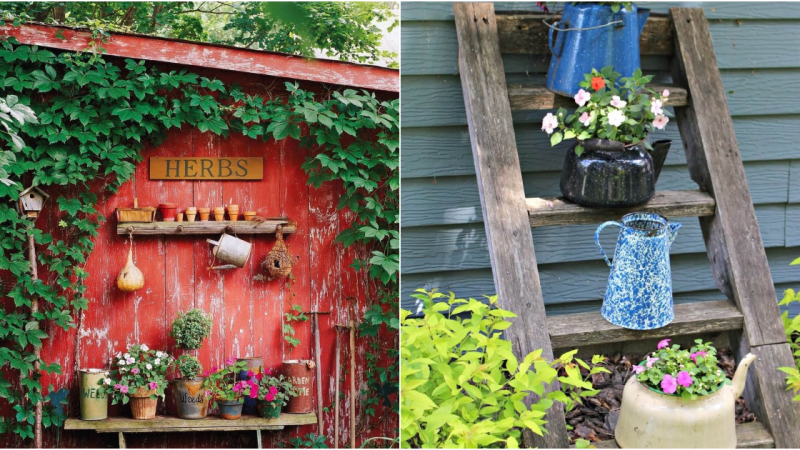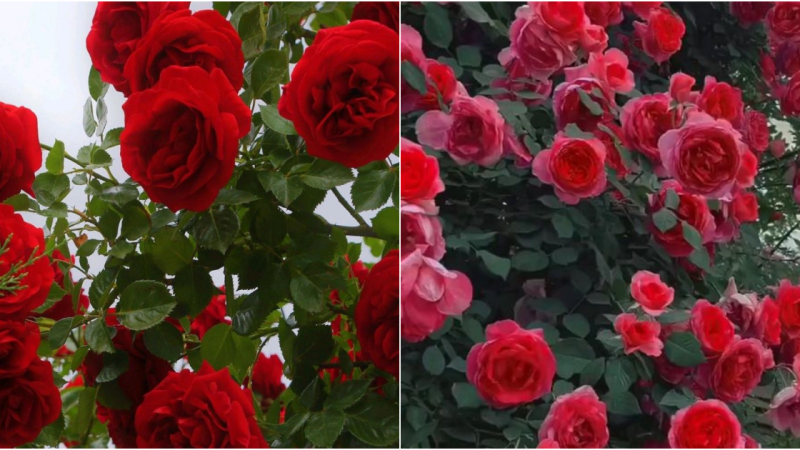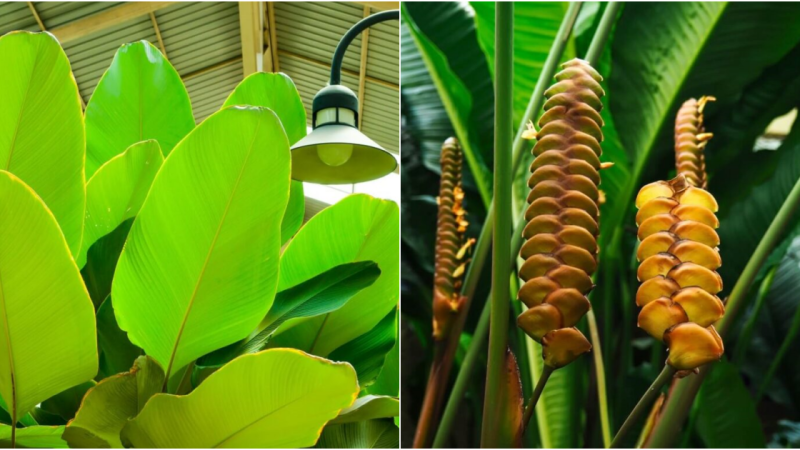The English Garden and Homemade Gazebo
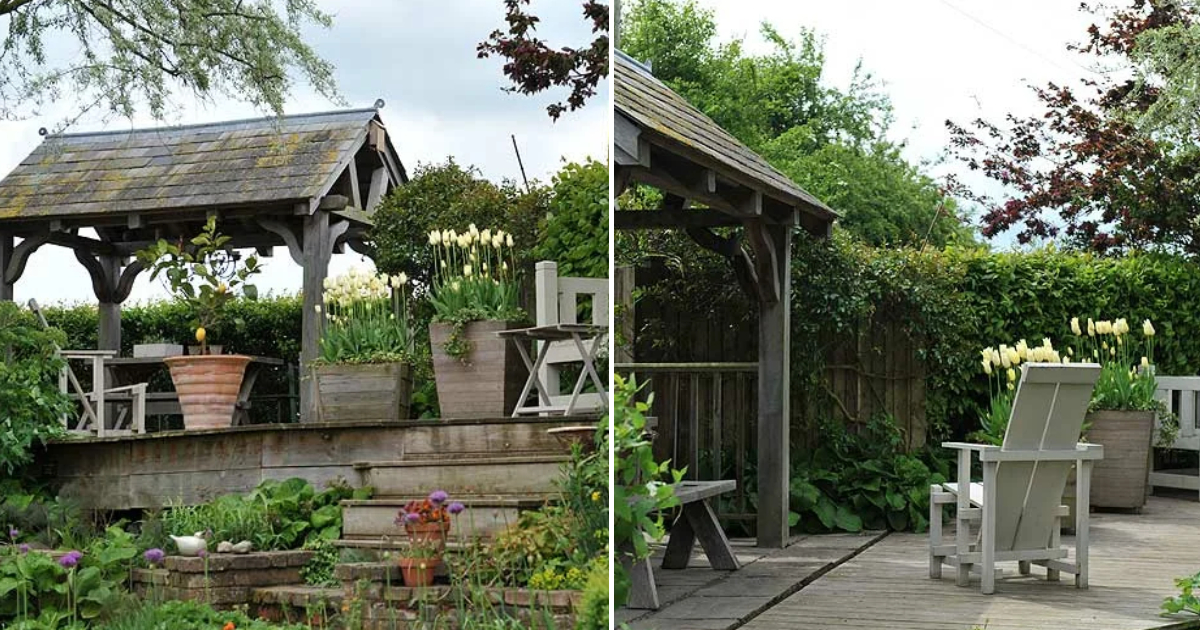
Even if you have a plot of land with heavy clay that can break a shovel, don’t give up. Corinna Layton’s example proves that there is a solution to the most challenging gardening situations.
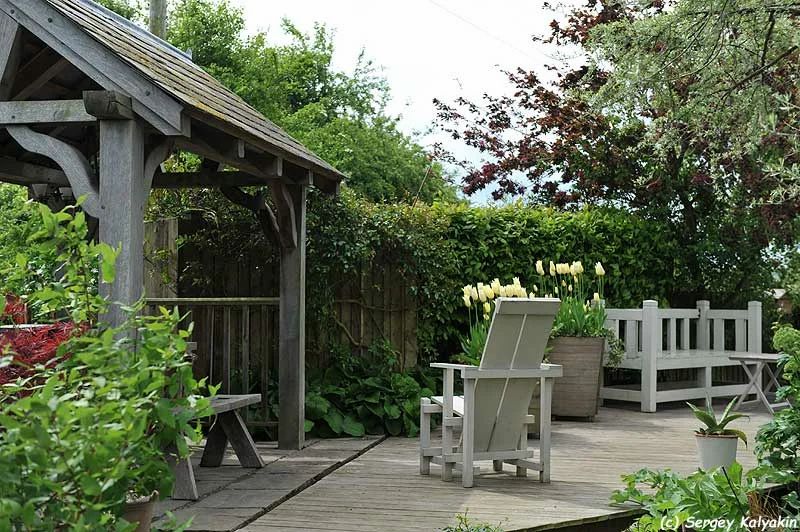
– How did your garden story begin?
– When my husband and I moved from a London apartment to our own house with a plot of land in Essex, we had rather naive and romantic ideas about gardening. It seemed that creating a beautiful garden like the ones in magazines would be easy and quick. Our hopes were dashed as soon as we started digging the soil.
It turned out that we had very heavy and compacted clay. There was no way to improve it manually. But we had no choice but to come up with a plan – we decided to terrace the plot. We achieved two goals at once: we created a terraced landscape and buried the unusable soil beneath the terraces. Then we added a thick layer of fertile soil on top. Of course, we had to use a mini-excavator for all of this.
– How do you choose your plants?
– I really like the color black and plants with dark flowers and leaves. I’m not a fan of bright colors, except for springtime. Currently, there are orange and yellow flowers in the garden, and they will be replaced by purple and pink blooms in the summer.
Another important aspect is health. I practice organic gardening and don’t use pesticides, so I don’t grow plants that are susceptible to diseases. You won’t find phlox paniculata or asters that are prone to powdery mildew in my garden.
– What about roses, which often suffer from diseases?
– I prefer Peter Beales roses. He and David Austin started working on roses at around the same time and in the same direction, but I prefer Beales’ roses. I grow both old and modern varieties, but only those that are disease-resistant. I especially like roses with single flowers because they attract bees, such as the Gallica rose ‘Complicata’.
One very nice old rose is ‘Tuscany Superb,’ and it’s almost black. If the catalog says that a rose is not very disease-resistant, I don’t buy it. Through my own experience, I’ve realized the importance of planting the right plants in the right places. It saves a lot of time and effort in maintenance.
– So, you don’t use any treatments on your plants at all?
– I spray them with a solution of seaweed. I collect seaweed from the shore, dry it, and grind it into a powder. Then I spray the entire garden with the solution. It’s a great product that helps plants deal with stress and diseases. I also grow comfrey, which flowers beautifully and attracts bees.
– How do you deal with slugs and snails?
– I use mulch. In the vegetable garden, I use nematodes that parasitize on slugs. It’s very convenient. You see the lettuce seedlings? I can’t do without beans and peas either. And there’s my auricula seedlings; many of them are double-flowered.
– Such a variety of crops must be a lot of work!
– Every year, I sit down with a seed catalog. It’s simply incredible how many new varieties appear, and I want to try them all! I love sowing and propagating, so most of the plants in my garden are grown from seeds or cuttings. Firstly, it gives me more specimens, and I always need at least a few identical plants.
I grow a lot of annuals and heat-loving plants like dahlias. Right now, you can see gaps in the flower beds – those spaces are reserved for dahlias and salvias. I will plant them when it gets warmer. Last year was very wet and cold, and the summer flowers didn’t perform well at all.
– What is that beautiful two-tone plant? It seems to be present in every garden…
– That’s wallflower (Erysimum), the variety ‘Jenny Brook.’ It’s a perennial wallflower, but we also grow biennial types. It’s a very old-fashioned plant. And all things new are actually well-forgotten old, which is probably why it’s so popular now. It also pairs well with tulips and alliums.
– Do you think there are trends in plants?
– Certainly. For example, in 2013, Chris Beardshaw presented a garden at the Chelsea Flower Show featuring the towering pride of Madeira (Echium pininana) as a vibrant centerpiece. Naturally, this giant plant itself looks like a sculpture. I think it will appear in many English gardens this year. It is cultivated as a biennial.
– You pay a lot of attention to bees, don’t you?
– Unfortunately, the use of neonicotinoids by farmers has led to a decline in bee populations in Europe. These chemicals don’t kill bees but disrupt their navigation. In England, there is a significant movement supporting bees and organic gardening. One of my flower beds consists only of bee-friendly flowers.
– You have beautiful garden furniture, an amazing gazebo. Is it a designer’s work?
– This chair is of a well-known design. I saw it in an article about Wave Hill Park in New York, wrote a letter, and they sent me the plans. My husband made it by hand.
And the gazebo too. It’s made of oak. It’s our favorite spot on summer evenings.
